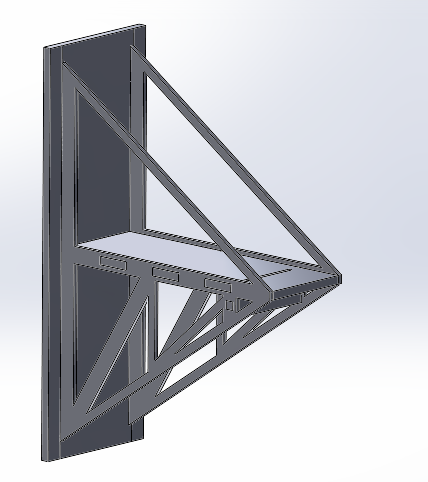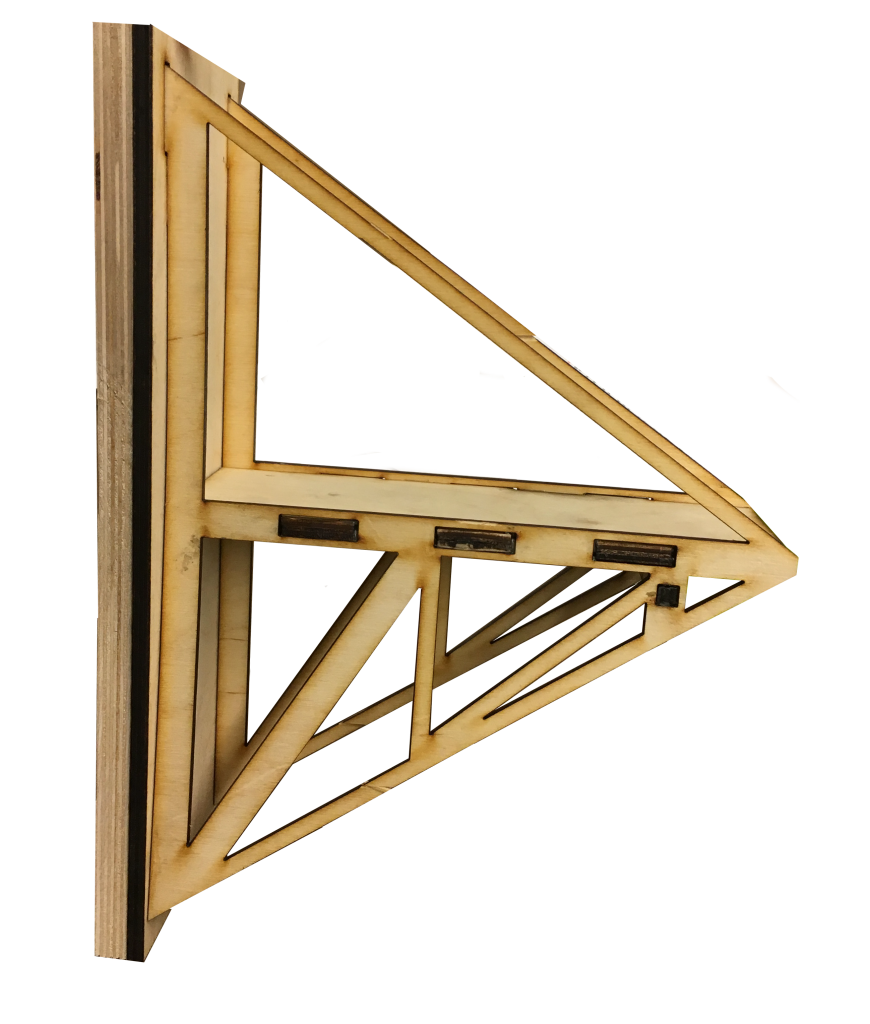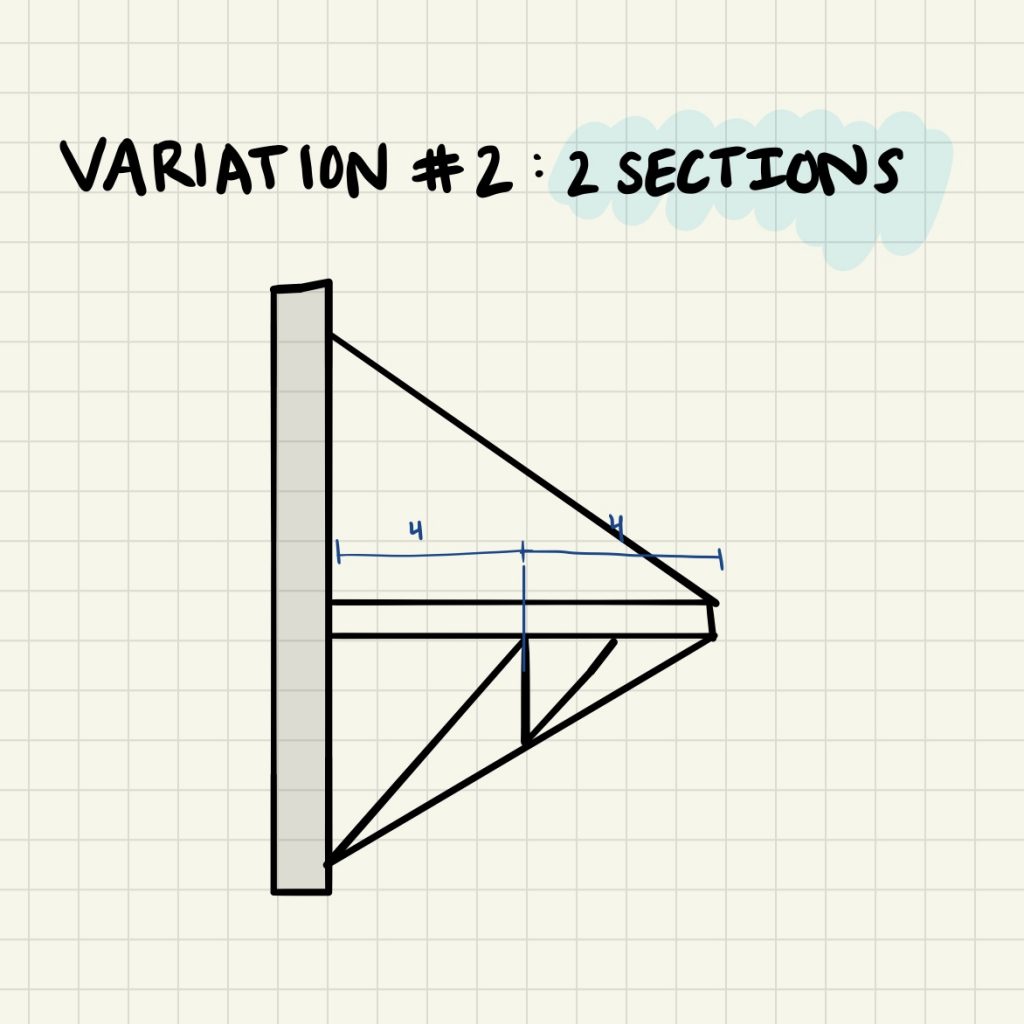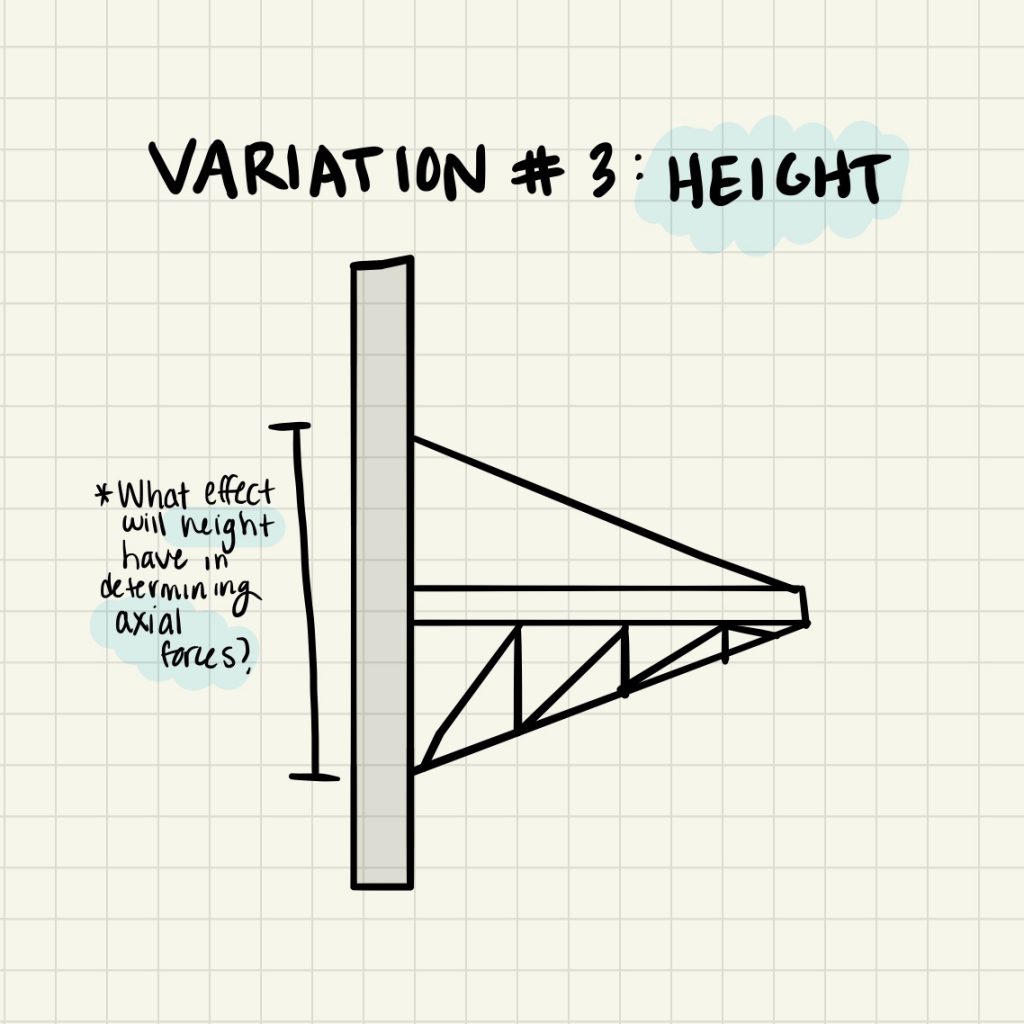

What could be better than one of the strongest load-bearing structures coupled with a friendly competition for high efficiency and stiffness? Truss Nobody took on this challenge with open arms. You’ve heard of the Golden Gate Bridge. Now get ready for this award-winning (18th/20th place) cantilever bridge.
So maybe I lied a little bit in the tagline of ‘trusses you can trust…’ Hence the 18th place in our class competition. But that’s okay! This project was about more than just the outcome (and I went on to take a higher level statics course; I’m confident I could now design & analyze a better version of this bridge), it was more-so about learning from our (many) mistakes and acquiring new analytical/team-oriented skills.
Project Constraints & Criteria

In constructing our bridges, we had various constraints that we were required to adhere to.
- Must make use of a 4″x12″ plywood backplate to fit in test jig
- Plywood bridge deck must be 8″x3″
- The bridge deck must be 6″ above the base of the test jig
- Bridge must be constructed using 1/8″ or 1/4″ plywood
- Total height of bridge must be less than 12″
We were also being judged on various criteria.
- Efficiency
- Accuracy of max-load analysis & prediction
- Accuracy of bridge deflections at .1kN
- Creativity and aesthetics
Project Goals
Obviously, my group went into the project with the goal of doing well in the overarching competition. To do so, we wanted to use minimal materials (to help optimize our weight-load ratio), create a unique design that stood out, and apply our knowledge of determinate truss analysis (we knew we had to use trusses as opposed to any other load-bearing structure due to our very clever group name) to maximize the bridge’s performance.
Bridge Design
To begin our design process, we researched various famous bridges & the manner in which they are supported. From that, we decided on a load bearing structure & began (individually) brainstorming how we wanted our bridge to look. We spent a lot of time analyzing variations of height & the orientation of our truss structure.

We decided to use a design that incorporated two truss sections. Using three (or more) resulted in zero force members & little to no change in which truss members were taking a majority of the load. We also opted to keep our height as tall as possible in order to reduce stresses in the longer diagonal members. Lastly, we deliberately chose a design where a truss joint was directly below the applied load; again with the objective to reduce anticipated stresses.

Results
Efficiency
Strength to weight ratio: 0.002189 kN/g
Rank: 15/20
Load
Max load prediction: 1.278 kN
Max load actual: .502 kN
Rank: 13/20
Deflection
Bridge deflection at .1 kN prediction: 0.0381 mm
Bridge deflection at .1 kN actual: 0.776 mm
Rank: 18/20
Creativity
Creativity: 5 [10 pt scale]
Rank: 4-way tie for last place

Project Takeaways
Minimal Materials ✓ | Unique Design – | Bridge Performance ✗
First and foremost, always account for buckling. Our bridge ultimately failed due to lack of lateral support. Also very important: always double-check calculations… and make sure you’re calculating the correct thing. Our predictions were pretty far off from our actual values for both maximum load and displacement, ultimately because our hand calculations were done correctly, but with incorrect load distribution. Because of this, when we ran computer analysis we got results wildly different from our hand calculations. Since we were young and didn’t know much about what we were doing, we just went with the computer predictions (should generally be a red flag when hand calculations are far from computer results).
Overall, this project really helped in exemplifying common issues related to applying academic concepts to the real-world. In the absence of ‘perfect conditions’ that so often come with calculations in textbooks, there are more factors that cannot be ignored.



